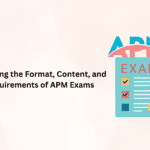If your big dream is to dedicate yourself to writing and you want to start your own novel, we provide you with some literary techniques and resources that you can use to start your book plan the plot or pose the initial scene.
To write a book (and finish it) it is necessary that in the “salad” there are a series of ingredients: find inspiration, have in your hand effective methods to generate ideas, invest enough time and effort, overcome the creative blocks and have good writing techniques.
But also, one of the most important points is the beginning of your creative work. Will you write it first or third person? Will you set it in the current era or will you travel back in time? Will your novel be endowed with a chronological, inverse structure, advocate for multiperspective or prefer an internal monologue? What tone and language will you choose?
These and other questions will be raised throughout your process of literary creation. Today, we want to give you a cable so you can start a book without effort.
First of all, it is important to clarify that there are no good or bad principles: all are valid and act as the axis or starting point to develop your story.
In the most acclaimed universal literature we come across all kinds of examples, from the classic “onion has to be firmly chopped” with the one that begins Like Water for Chocolate, by Laura Esquivel to “the Dashwood family had been settled in Sussex for a long time” which begins Jane Austen’s trial and feeling or the emblematic beginning of Juan Rulfo’s novel, which read: “I came to Comala because they told me that my father lived here, a certain Pedro Paramo”.
9 Methods to Start Writing a Book

There are very different mechanisms at the time of sitting down to write your story: you can advocate presenting the reader with some characters and a specific place on the scene, join a particular fact with universal information, talk about a sudden and unexpected fact that upsets life of the protagonist, introduce a direct action or bet on a poetic or philosophical phrase.
Be that as it may, write down the following ten techniques to start writing a book:
- Character, time, place: This classic technique for writing a book consists precisely in selecting these three points in a concrete way, whether for a novel or for a story. If you cannot think of anything and your inspiration is blocked, choose a random name with a word generator on the Internet, choose a decade or a year in an arbitrary way and point to any city. For example Maria, in the 50s, in a town in Mexico.
- He resorts to the flashback: This resource is very habitual in the cinema and continues without being high due to the immense creative possibilities that it offers. You can start at the end -or through the middle- of the story and go backward, chronologically, inverse or jumps to reveal to your readers what happens in the plot.
- Game of words, verse or song: Many novels begin on the first page with phrases from other authors, the refrain of a song, a philosophical sentence or something that ultimately sets the tone of the story and manages to captivate your recipient. Other creative forms are a cooking recipe, a riddle or a pastime that can be somehow related to the plot of the story.
- Choose the daily format: Both the epistolary format of the letters and that of the journals have gone a long way through the history of literature and allows you to bet on a fresh, introspective approach and in small temporary blocks. The personal diary of the protagonist works excellently in the police, thriller or black genre, as well as for interior monologues and intimate stories.
- Bet on the letters of Vladimir Propp: These are elements that appear in the stories with different functionalities and that the teacher Gianni Rodari recommends in his work Grammar of fantasy to get to write. You can start your story by any of the functions, which are the following: Removal / Prohibition / Transgression / Questioning / Information / Deception / Complicity / Fever (or lack) / Mediation / Principle of the opposite action / Departure / First function of the donor / Hero Reaction / Magic Object Reception / Displacement / Combat / Mark / Victory / Repair / Lap / Persecution / Relief / Arrival incognito / Deceptive Pretension / Hard Task / Task Done / Recognition / Discovery / Transfiguration / Punishment / Marriage.
- An abrupt change of course: The arrival of a letter, a car accident, the appearance of a supernatural phenomenon or a shooting can suddenly alter the lives of the protagonists of your story. To do this, you can use the first paragraph of your story to highlight the contrast between happiness and a shocking or negative event that changes the destiny of one or several characters.
- A brutal and transgressive fact as a starting point: To capture the attention of the recipient from the first second you can bet on strong dishes, from a corpse that emerges from the depths of the sea to a fight outside a bar, a mysterious email or a hypnosis session are some examples of powerful images to start the story.
- Dare with the dialogue: Instead of starting with a description, you can bet on the dynamism of a dialogue between two or more important characters, helping you to define them and to draw a scene, a place, and a context. Imagine the conversation and even show it up, trying to condense the essence and attitude of the characters.
- Provide a clue: If you are going to write a horror or intrigue novel you can start with a relevant clue whereby the detective, the police or a team of investigators open the case. Another method is to start with an important memory and return to the present.







